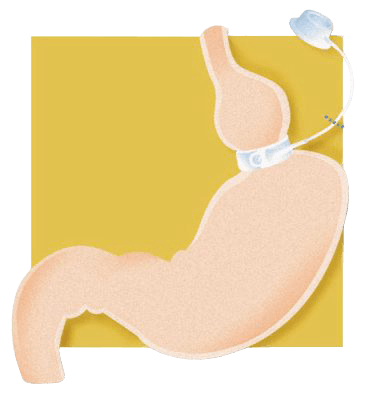LAP-BAND®
System Overview
In this procedure, a hollow band made of special material is placed around the upper end of the stomach, creating a small pouch and a narrow passage into the larger remainder of the stomach. The band is then inflated with a saline solution. Increasing or decreasing the amount of salt solution will tighten or loosen the size of the passage.
LAP-BAND induces weight loss by reducing the capacity of the stomach, which restricts the amount of food that can be consumed. The entire procedure is done laparoscopically, in which a laparoscope is inserted into the abdominal wall through small surgical incisions. For more information, visit Everything You Ever Wanted To Know About The LAP-BAND.
Advantages of LAP-BAND Surgery
Minimal Trauma
Minimal Trauma
- Least invasive surgical option
- No intestinal re-routing
- No cutting or stapling of the stomach wall or bowel
- Reduced pain, hospital length of stay, and recovery period
Fewer Risks and Side Effects
Fewer Risks and Side Effects
- Lower mortality risk than other weight loss surgical procedures
- Low risk of nutritional deficiencies associated with Gastric Bypass
- Reduced risk of hair loss
- No “dumping syndrome” related to dietary intake restrictions
Adjustable
Adjustable
- Allows individualized degree of restrictions for long-term weight loss
- Adjustments performed without additional surgery
- Supports pregnancy by allowing stomach outlet size to be opened for increased nutritional needs
Reversible
Reversible
- Removable
- Stomach and other anatomy are generally restored to their original form and functions
Effective Long-Term Weight Loss
Effective Long-Term Weight Loss
- More than 600,000 cases performed worldwide
- Average loss of 40-60% of excess body weight at 2 years

To modify the size of the band, its inner surface can be inflated or deflated with a saline solution. The band is connected by tubing to an access port, which is placed well below the skin during surgery. After the operation, the surgeon can control the amount of saline in the band by entering the port with a fine needle through the skin.

